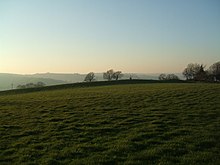
Back Scheduled Monument BAR Scheduled monument Danish Scheduled Monument German Monumento planificado Spanish Scheduled monument French מונומנט רשום HE Scheduled monument ID Scheduled monument NN Scheduled Monument NB Monumento marcado Portuguese

In the United Kingdom, a scheduled monument is a nationally important archaeological site or historic building, given protection against unauthorised change.
The various pieces of legislation that legally protect heritage assets from damage and destruction are grouped under the term "designation". The protection provided to scheduled monuments is given under the Ancient Monuments and Archaeological Areas Act 1979,[1] which is a different law from that used for listed buildings (which fall within the town and country planning system).[1] A heritage asset is a part of the historic environment that is valued because of its historic, archaeological, architectural or artistic interest.[2] Only some of these are judged to be important enough to have extra legal protection through designation.
There are about 20,000 scheduled monuments in England representing about 37,000 heritage assets.[3] Of the tens of thousands of scheduled monuments in the UK, most are inconspicuous archaeological sites, but some are large ruins. According to the 1979 Act, a monument cannot be a structure which is occupied as a dwelling, used as a place of worship or a protected shipwreck.
- ^ a b "Ancient Monuments and Archaeological Areas Act 1979", legislation.gov.uk, The National Archives, 1979 c. 46
- ^ "Protecting the Historic Environment". Department for Culture, Media and Sport. Archived from the original on 21 August 2011. Retrieved 7 June 2011.
- ^ "Scheduled Monuments" (PDF). Department for Culture, Media and Sport. March 2010. Archived from the original (PDF) on 4 December 2012. Retrieved 7 June 2011.
© MMXXIII Rich X Search. We shall prevail. All rights reserved. Rich X Search